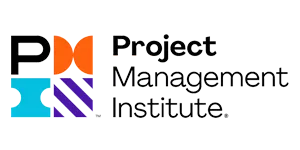Six Sigma and DMAIC in Focus: D – Define Your Six Sigma Project
This article is the first part in our series on the principles of Six Sigma, focusing on Define within the DMAIC framework. You can find the rest of our series here.
Working in Six Sigma, one of the first things you will hear about is DMAIC. It’s as much a part of the landscape as Lean thinking or Master Black Belts. But what is DMAIC? It’s an acronym, and it stands for: Define, Measure, Analyze, Improve, and Control.
How To Define ‘Define.’
As you can see, there are five stages to the DMAIC formula. The first of these stages is Define. But what does this mean exactly? What is its place in the DMAIC improvement cycle, and how does it work?
As the first stage in DMAIC, Define is arguably the most important. The first action it calls for, much like Six Sigma, is articulate the problem you face in a clear way. This can be anything, for example, you may experience slow production times, depleted costs, or decrease in quality. It all depends on you and your business. The purpose of Define is to help you come up with a focused problem statement as well as a measure of success or failure to support that statement.
State Your Problem
Stating your problem may seem simple enough, but it involves a lot of additional effort on your part. A deep understanding of your business and its goals are essential here, as you will need to be able to describe them accurately and in detail, along with any potential resources you have to assist you. This is also an ideal time to identify future resources you may need, as acquiring them up front can help avoid similar problems in the future.
You will also need to consider the overall project scope – including the duration of the project, affected areas/areas that require attention, as well as costs to you – and a high-level timeline to determine how to proceed. A charter document is the best way to capture all of this information – write down everything that you know at the moment, collect and collate all of your current knowledge.
Produce a Charter Document
A charter document of this nature should include the project scope (with a statement, overall metric, and project metric), potential opportunities (including savings, profits, improvements, baseline performance, and goal performance), project status (historically, currently, and as predicted, with analyses for product returns and root causes), and finally any actions and/or open issues. This information is essential to the Define stage, which relies on clear, accurate qualitative data to function. Using the knowledge you have compiled, you will be able to define the following issues:
- Your Problem – Starting with the issue at hand puts everything else into perspective. Look at what the problem is, what it does, what it affects. Consider where it may stem from and how it can be resolved.
- Consider your customers – The customer is the backbone of your business. You rely on them for profit, just as they rely on your for excellent products and services. Consider how the problem affects them. For example, if a problem causes your product to become defective, it will affect customer satisfaction.
- Critical Process Outputs – Critical process outputs such as Voice of the Customer (VOC) and critical to quality (CTQs) are also important. Once this is completed, any anomalous or missing data you can seek to clarify. You can also focus on setting objectives to be met by the conclusion of the project, as well as putting together a project team dedicated to overseeing and implementing the proposed changes yielded by the DMAIC process.
Stop by and contact us at 6Sigma.us and find out how we can positively help you plan and change the culture and operations of your organization. We offer Green Belt and Black Belt training programs, as well as a Master Black Belt program.
SixSigma.us offers both Live Virtual classes as well as Online Self-Paced training. Most option includes access to the same great Master Black Belt instructors that teach our World Class in-person sessions. Sign-up today!
Virtual Classroom Training Programs Self-Paced Online Training Programs







